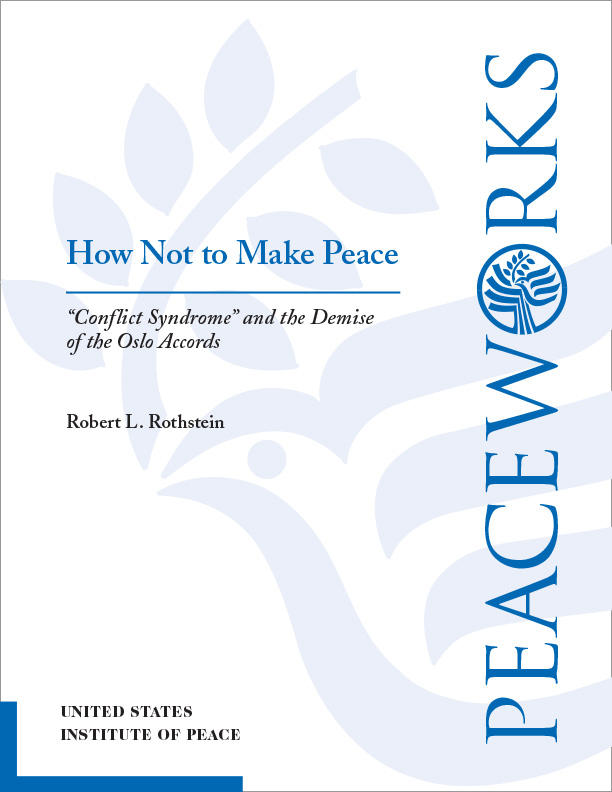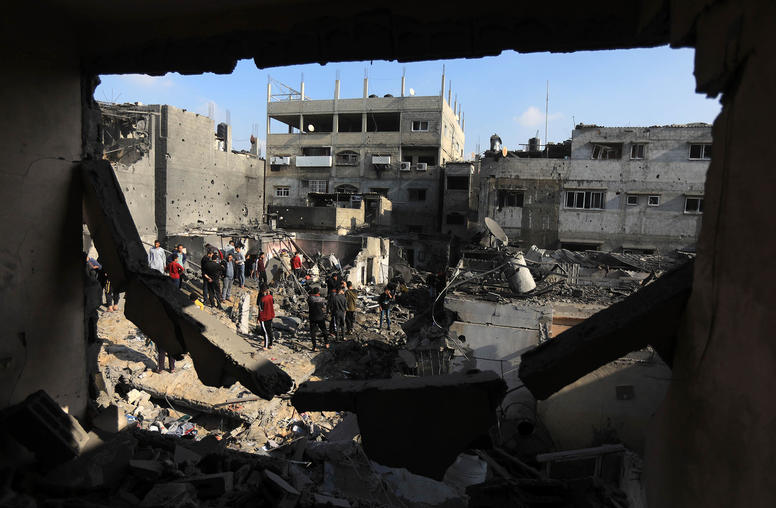How Not to Make Peace: "Conflict Syndrome" and the Demise of the Oslo Accords
Peaceworks No. 57
The failure of the Oslo Accords has been attributed to a variety of factors, including deficiencies in the accords themselves, failures of implementation, and the play of domestic politics. These are all critical factors that describe what happened, but they do not explain why each side behaved as it did--that is, why each side made choices that would only increase the likelihood of the accords' failure.

Summary
The failure of the Oslo Accords has been attributed to a variety of factors, including deficiencies in the accords themselves, failures of implementation, and the play of domestic politics. These are all critical factors that describe what happened, but they do not explain why each side behaved as it did--that is, why each side made choices that would only increase the likelihood of the accords' failure. To understand why each side behaved as it did, we must first understand the "conflict syndrome" that affected the negotiating and decision-making process--a syndrome that is, to varying degrees, present in many protracted conflicts. While the conflict syndrome is never the sole cause of failure in any given peace process and does not affect every conflict in the same way, the significant role it often plays in perpetuating conflict is frequently ignored or undervalued.
Conflict syndrome consists of a set of attitudes, assumptions, and beliefs that become embedded over decades of bitter conflict and are difficult to unlearn even if some kind of peace agreement--or exploratory truce--has been signed. The individual elements of the syndrome are familiar, but, taken as a whole, they exert a powerful influence on most peace processes and inform the choices each side makes. Thus, distrusting the opposite side's motives by default, cheating for fear of being cheated, making only tentative concessions that can easily be revoked, and asking the other side to prove its good faith by making large initial concessions, among other things, generate a peace process that can easily become a "race to the bottom." This implies that the stop-and-go, on-and-off, crisis-driven peace processes in the Middle East and elsewhere should not be taken as aberrations: they are the norm that should be anticipated and planned for.
This argument has clear policy implications. Premature ceremonies on the White House lawn and inflated rhetoric that raises expectations too hastily need to be avoided. The search for quick solutions and "last negotiations" is likely to lead to a return of bitter discord. To solve the Middle East conflict, a carefully calibrated peace process--described herein as "gradually accelerating incrementalism"--is needed. Architects of such a process must recognize that elements of the conflict syndrome still persist in the Middle East and will for years to come, that high-risk/high-gain negotiating strategies in such a context are bound to fail, and that demands for stricter compliance with commitments can and should increase as the process begins to provide both sides with tangible evidence that it can produce mutual benefits and is worth preserving.
About the Author
Robert L. Rothstein is the Harvey Picker Distinguished Professor of International Relations (Emeritus) at Colgate University. He has written or edited nine books and some eighty articles and has been a past fellow of the United States Institute of Peace, the Woodrow Wilson International Center for Scholars, the Rockefeller Foundation, and the Carnegie Foundation. He has also received several research grants from the U.S. Department of State and the United Nations. His most recent book, jointly edited with Moshe Ma'oz and Khalil Shikaki, is The Israeli-Palestinian Peace Process: The Lessons of Failure.



